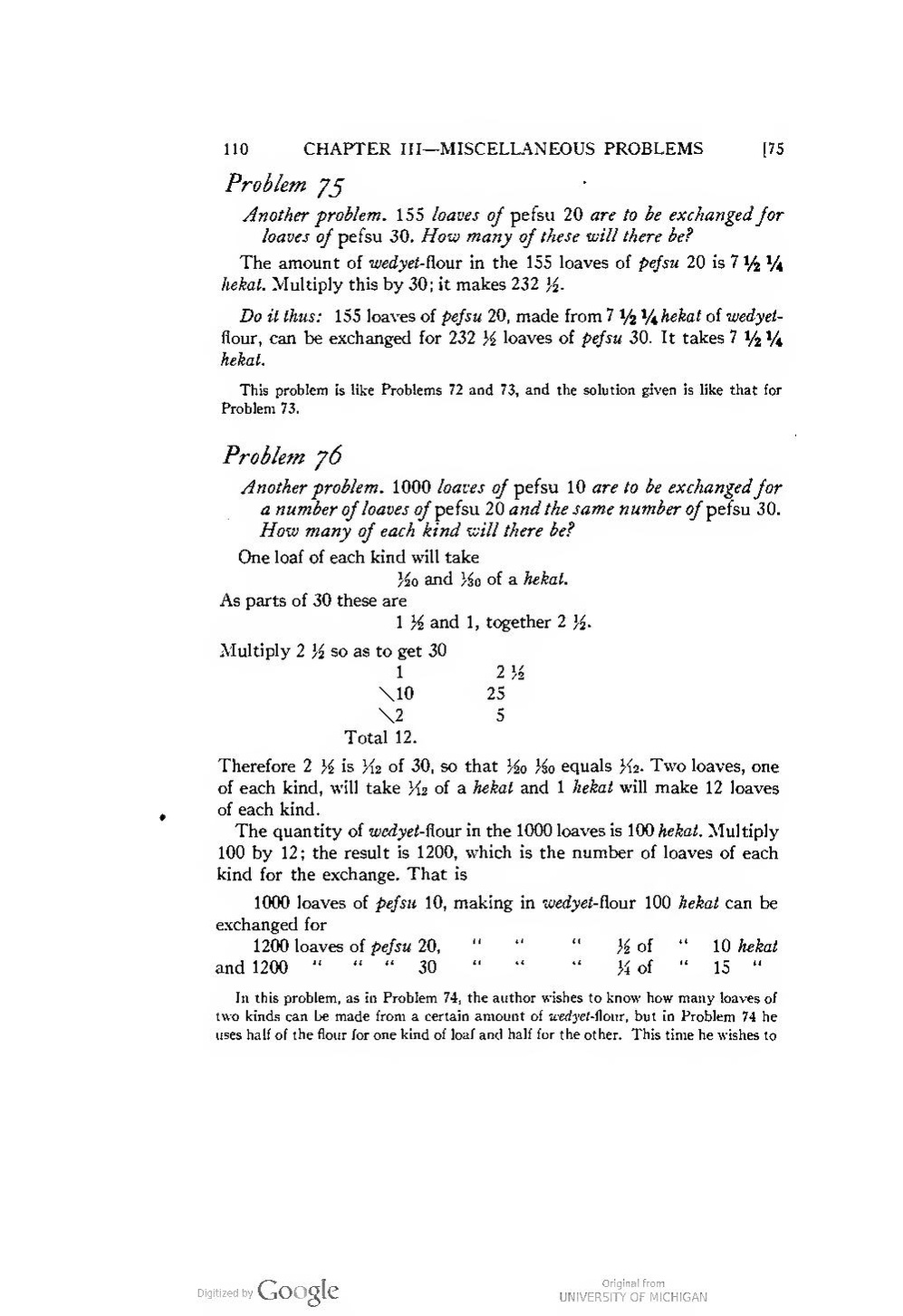Problem 75
Another problem. 155 loaves of pefsu 20 are to be exelzanged for loaves of pefsu 30. How many of these will there be?
The amount of wedyet-flour in the 155 loaves of pefsu 20 is 71⁄21⁄4 hekat. Multiply this by 30; it makes 2321⁄2.
Do it thus: 155 loaves of pefsu 20, made from 71⁄21⁄4 hekat of wedyet-flour, can be exchanged for 2321⁄2 loaves of pefsu 30. It takes 71⁄21⁄4 hekat.
This problem is like Problems 72 and 73, and the solution given is like that for Problem 73.
Problem 76
Another problem. 1000 loaves of pefsu 10 are to be exchanged for a number of loaves of pefsu 20 and the same number of pefsu 30. How many of each kind will there be?
One loaf of each kind will take
1⁄20 and 1⁄30 of a hekat.
As parts of 30 these are
1⁄11⁄2 and 1, together 21⁄2.
Multiply 21⁄2 so as to get 30
| 1 | 21⁄2 | |
| \ | 10 | 25 |
| \ | 2 | 5 |
| Total | 12. |
Therefore 21⁄2 is biz of 30, so that 1⁄201⁄30 equals 1⁄12. Two loaves, one of each kind, will take 1⁄12 of a hekat and 1 hekat will make 12 loaves of each kind.
The quantity of wedyet-flour in the 1000 loaves is 100 hekat. Multiply 100 by 12; the result is 1200, which is the number of loaves of each kind for the exchange. That is
| 1000 | loaves | of | pefsu | 10, | making | in | wedyet-flour | 100 | hekat can be exchanged for | ||||
| 1200 | loaves | of | pefsu | 20, | " | " | " | 1⁄2 | of | " | 10 | hekat | |
| and | 1200 | " | " | " | 30 | " | " | " | 1⁄4 | of | " | 15 | " |
